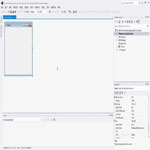


Useful towards programmers and QA to evaluate their goods for different input values. When we have a predefined prototype, then perhaps we can create any number of random JSON structures using this method.
Visual json modeler code#
Site24x7 provides tools to create JSON code based upon its File design. It can only run on terminal, no UI support.It not only validates a JSON but also allows you to update, copy, move and swap.
Visual json modeler download#
Compiled binaries are available for download For Linux and macOS. The user interface allows you to use a single order to implement the majority of the improvements. JTC can be used by developers to pick one or more elements from the JSON source and implement actions to all these entities in one go, including binding key aspects in a new File, filtering in and out, or modifying elements. JTC, short for “JSON test console,” is a CLI for downloading, editing, and transforming source JSON. In any case, comparing all such tools would go a long way to equip you with unique JSON abilities. Of course, your particular requirements will determine which resources to use. Other JSON tools can integrate directly into your development toolchain.Ī variety of JSON resources are available, and each comes with a range of distinctive features and constraints. To save JSON validation time, you can copy and paste it into any tool, and you’ll get a beautified, easy-to-understand JSON. Looks easy to read, right? This is where JSON formatters, validators, and parsers come into play. Have a look at the example below: Ĭan you understand from where the inner JSON starts? Are you able to clearly understand the fields and values? It might look easy right now, but when you’re dealing with a massive chunk of JSON, you’ll get confused. When you print JSON through a program, it becomes difficult to understand what’s written inside since all the formatting is removed when the code is compiled. Writing JSON code isn’t a huge task but, validating and parsing JSON is a bit difficult. JavaScript has a global JSON object with methods for translating between the two - this is not a major problem. To access the info, you must translate it into a native JavaScript object. JSON is very useful when transferring data over a network. Nowadays, JSON is more compatible, lightweight, and relatively easy to use compared to other formats for open data sharing. However, over the years, JavaScript significantly expanded in use.


JSON can be used with many modern programming languages.įor a time, the only choice for open data interchange was the eXtensible Markup Language (XML). Thus, JSON is widely adopted in web services and APIs - enabling web applications to transfer and retrieve data with a common format. JSON is used for serializing and transmitting structured data over a network connection. You can use JSON independently of JavaScript, but it strongly resembles JavaScript object literal syntax, and several programming environments can interpret (parse) and create JSON. JavaScript Object Notation (JSON) is a standard text-oriented format based on JavaScript object syntax to represent structured data. Below, we’ll give a high-level overview of JSON and explore 25+ parsing and validation tools to help beautify your JSON. However, sometimes JSON needs a little polishing up. JSON has become a standard structured data format for transferring information using web APIs.


 0 kommentar(er)
0 kommentar(er)
